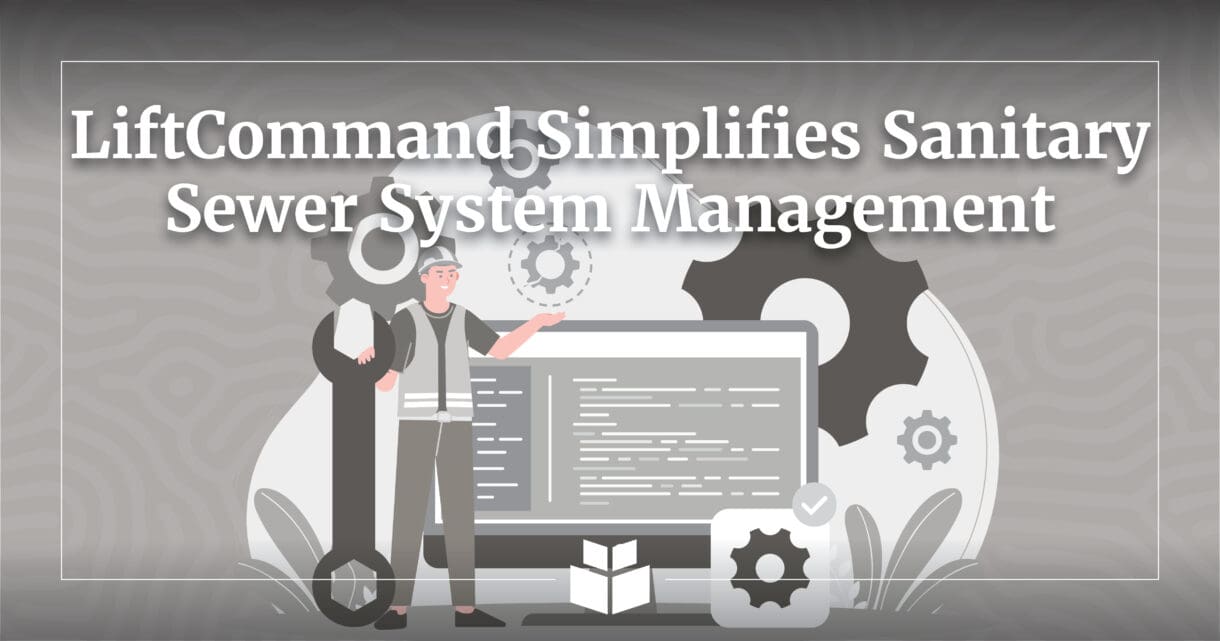
Sanitary sewer flow tracking may not be glamorous, but it is an essential part of securing real estate development opportunities, avoiding sanitary sewer overflows (SSOs), and complying with state-mandated permitting requirements. Spreadsheet- and paper-based tracking methods are cumbersome and error-prone. There is a better way: LiftCommand.
What is LiftCommand?
LiftCommand is a web-based software application that tracks sanitary sewer flow between lift stations and wastewater treatment plants.
LiftCommand helps utility directors, sewer system operators, and pump station managers complete four tasks:
- Calculate flow through all downstream lift stations and treatment plants.
- Track flow requests and overall sanitary sewer system capacity.
- Generate ready-to-submit Flow Tracking for Sewer Extension (FTSE) forms required by the NCDEQ in seconds.
- View the impacts of proposed real estate development on sanitary sewer capacity.
How does LiftCommand work?
LiftCommand breaks down sanitary sewer systems into three basic components: wastewater treatment plants, lift stations, and projects.
Wastewater treatment plants receive sanitary sewer flow from lift stations in their jurisdiction. Lift stations receive sanitary sewer flow from existing or proposed land development projects such as new neighborhoods, commercial districts, or industrial parks.
Users add these components in LiftCommand to build a simple model of their wastewater system. For wastewater treatment plants and lift stations, they enter data related to capacity and flow. For projects, they enter data about the amount of flow requested and the build out percentage of the project.
With this data, LiftCommand calculates the current and available capacity at the wastewater plant and at each component on the way to the plant. It highlights components at risk of an SSO, and it provides a tool for generating a pre-filled FTSE form when a new project is proposed.
Why should local governments choose LiftCommand?
The two most common solutions for tracking sanitary sewer capacity are digital spreadsheets and paper-based records. Spreadsheets perform automatic calculations, but they are prone to miscalculations and broken formulas as new facilities are added, and they may not be able to account for individual projects. Paper-based tracking is even less reliable: in anything other than a very small community, it can be difficult to keep track of the path of sanitary sewer flow between facilities, and even harder to track projects, the impacts of which must all be calculated longhand.
LiftCommand eliminates the problems with both methods by providing an easy interface for defining the path of sanitary sewer flow and then updating all calculations automatically as components are added—no redefining ranges or rewriting formulas needed.
In addition, LiftCommand addresses three common scenarios faced by planning departments and wastewater system operators:
Scenario #1 – Missing Out on Development Opportunities
A developer asks, “Does your sanitary sewer system have enough capacity to accommodate my project?” You’re not sure, because you don’t have an easy way to determine the system’s total or available capacity.
With LiftCommand, users can not only view total capacity and available capacity at a wastewater plant, but also the capacity of every lift station en route to the plant.
Scenario #2 – Sanitary Sewer Overflows (SSOs)
A developer submits a project for permitting. You review an internal spreadsheet that lists your sanitary sewer facilities and confirm there is capacity. But the spreadsheet doesn’t account for all existing and proposed flows, and the added volume from the project causes an SSO.
LiftCommand updates capacity values as projects are added and built out, reducing the likelihood of double-committing capacity or exceeding design capacity.
Scenario #3 – Submitting & Tracking FTSE Forms
Your department approves a new development, which means you’re required to submit an FTSE form. Since historical records are stored in paper files, filling out the paperwork is a headache, with frequent backtracking to check and adjust calculations. The completed FTSE becomes another hard-to-reference sheet in a file cabinet.
LiftCommand stores all the information necessary to complete an FTSE form. Generating the form is as simple as clicking “Print.”
What’s next?
If you are a utility director, sewer system operator, or pump station manager ready to leave spreadsheet- or paper-based tracking in the past, schedule a LiftCommand demo or contact us with questions.
